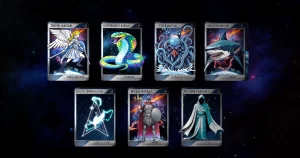VR becomes an important tool for Marines, maximizing money and time

At this year’s Modern Day Marine event, Marines from the Marine Corps Air Ground Combat Center at Twentynine Palms, California, showcased cutting-edge training tools designed to prepare warfighters for the battlefield of tomorrow. The centerpiece of their demonstration was Project Tripoli, a comprehensive training initiative that integrates live, virtual and constructive elements to simulate realistic combat scenarios.
The setup resembled a high-end video game environment, but its purpose was far more serious — enhancing the readiness of Marine Air Ground Task Forces.
Technology assisting readiness
“We leverage a lot of different emerging technologies as well as more traditional training methods,” said Lt. Col. Jesse Attig, the modeling and simulation officer for the MAGTF Training Command. “We bring people up from the most basic level of tasks to more complex collective training where they come together as a team.”
Project Tripoli consists of 16 components that collectively create a modern battlefield training environment. Marines begin with individual skill-building exercises, often using laptop-based simulations, and progress to group-based scenarios that mimic real-world operations.
“We prepare Marines in simulation before they go out and do it live,” Attig said. “That way, we optimize the time we have in the field. We are not wasting gas, flight hours or ammunition.”
The virtual training also offers a strategic advantage; it allows units to train without revealing tactics to adversaries who may be monitoring U.S. military activities via reconnaissance satellites.
“Every time we train in the live environment, we show the rest of the world what we are doing,” Attig said. “Virtual training helps us maintain operational security.”
Simulations mirroring reality
To address concerns that virtual training lacks real-world consequences, Attig explained that the system includes penalties for mistakes. If a Marine is “killed” in a simulation, they must go through a detailed regeneration process, including casualty collection and processing procedures.
“We do not just hit reset,” Attig said. “We make the staff deal with the consequences. It adds realism and reinforces the seriousness of the training.”
Attig emphasized that the long-term goal of Project Tripoli is to improve warfighting skills through realistic scenarios, advanced tactics, and the strategic use of technology.
“We are preparing the next generation of Marines for whatever combat environments they may face,” he said.
In addition to Project Tripoli, this episode of “Weapons and Warfare” also features a look at a virtual reality parachute simulator used for special forces training, as well as an overview of BlueHalo’s LOCUST laser weapon system, which utilizes high-energy lasers to track and engage targets with precision.
Access the full Weapons and Warfare episode here.
Access all Weapons and Warfare podcast episodes here.





